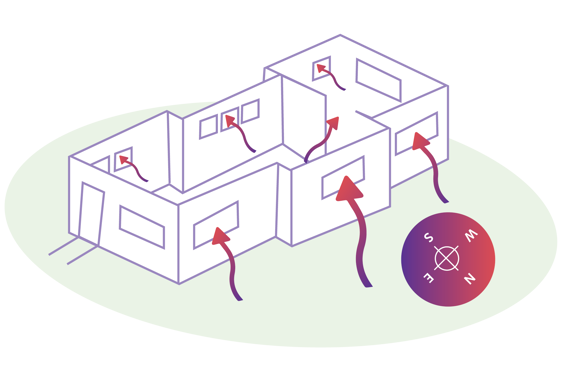About your new home
New Build Property warranty
Your home will have an insurance guarantee as it's a new build - the most common providers are NHBC, LABC and Premier.
For the first 12 months of your property being built, we're responsible for notifying the developer of any valid defects that you report and that they're rectified within the agreed timescales. If you own your home, please explore your warranty for guidance after the first year. You may be able to approach the developer directly after our responsibility ceases.
Further information can be located in your individual policy, found in your handover pack or on request via the Aftercare Team.
Shrinkage
Over time, as your home is lived in and heated, timber and other materials used in the property’s constuction will shrink. This shrinkage can cause small cracks on the walls and the ceiling finish. Small gaps may also appear at joints and corners of skirting boards and other interior joinery.
These small cracks are not structurally significant and can be put right in the normal process of redecoration. These are not defects and therefore won’t be covered by the property warranty or the contractor’s warranty.
To minimise cracking, try to keep a reasonably even temperature throughout your home, even in rooms which aren’t occupied.
Ventilation
Your property is a well-insulated and well-sealed dwelling, built to a high standard of construction and air tightness.
However, it’s important to remember that the property needs time to dry out, and that you’ll need to allow any moisture to evaporate by keeping your home well ventilated.
Leaving a window, or at least the trickle vents at the top of your windows, slightly open for as long as you can each day will help to reduce moisture levels in your home.

Condensation and mould
Condensation is created when warm air comes into contact with cold surfaces, or when there’s too much moisture in your home.
The dampness caused by a large amount of condensation can lead to the growth of mould on walls, furniture and other belongings, mildew on fabrics and can even cause wood to rot – including window frames. It can also damage your health.
For advice on minimising condensation, please click here.
Sufficient heating + insulation + adequate ventilation = less condensation
Water temperature
Please be aware that due to building regulations, your bath has been fitted with a Thermostatic Mixing Valve (TMV).
TMVs, also known as blending valves, help to regulate the flow of hot and cold water, usually into a basin or bath, so that the risk of scalding is minimised.
Neither Amplius nor the onsite contractor are able to remove the TMV, and this isn’t classed as a defect.


